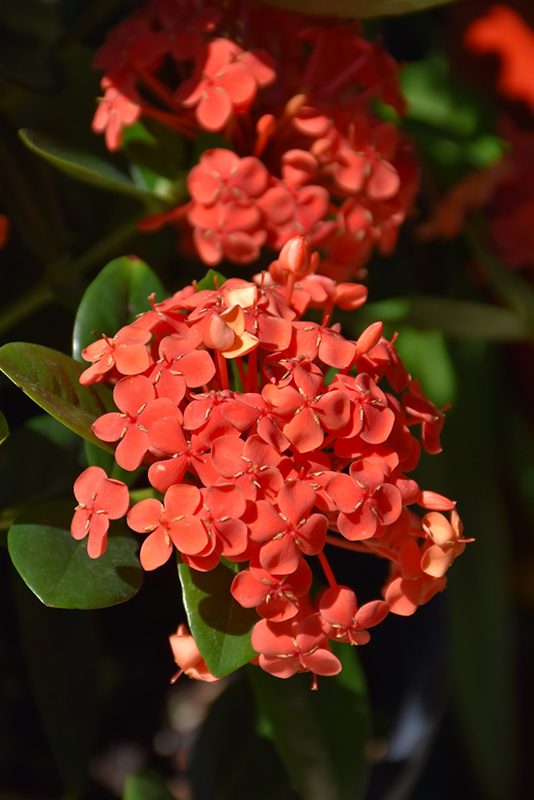Height: 3 feet
Spread: 3 feet
Sunlight:
![]()
![]()
Hardiness Zone: 9b
Description:
This variety is a dependable year-round bloomer for warm southern climates; red or yellow flowers are held in large ball shaped clusters; excellent for containers or along walkways
Ornamental Features
Maui Ixora features showy red ball-shaped flowers at the ends of the branches from late winter to late fall. It has attractive green evergreen foliage which emerges light green in spring. The glossy oval leaves are highly ornamental and remain green throughout the winter.
Landscape Attributes
Maui Ixora is a multi-stemmed evergreen shrub with a more or less rounded form. Its average texture blends into the landscape, but can be balanced by one or two finer or coarser trees or shrubs for an effective composition.
This shrub will require occasional maintenance and upkeep, and is best pruned in late winter once the threat of extreme cold has passed. It is a good choice for attracting bees and butterflies to your yard. It has no significant negative characteristics.
Maui Ixora is recommended for the following landscape applications;
- Accent
- Mass Planting
- Rock/Alpine Gardens
- General Garden Use
- Container Planting
Planting & Growing
Maui Ixora will grow to be about 3 feet tall at maturity, with a spread of 3 feet. It has a low canopy. It grows at a slow rate, and under ideal conditions can be expected to live for approximately 20 years.
This shrub does best in full sun to partial shade. It does best in average to evenly moist conditions, but will not tolerate standing water. It may require supplemental watering during periods of drought or extended heat. It is not particular as to soil type, but has a definite preference for acidic soils. It is somewhat tolerant of urban pollution. This particular variety is an interspecific hybrid.
Maui Ixora makes a fine choice for the outdoor landscape, but it is also well-suited for use in outdoor pots and containers. Because of its height, it is often used as a 'thriller' in the 'spiller-thriller-filler' container combination; plant it near the center of the pot, surrounded by smaller plants and those that spill over the edges. It is even sizeable enough that it can be grown alone in a suitable container. Note that when grown in a container, it may not perform exactly as indicated on the tag - this is to be expected. Also note that when growing plants in outdoor containers and baskets, they may require more frequent waterings than they would in the yard or garden.

